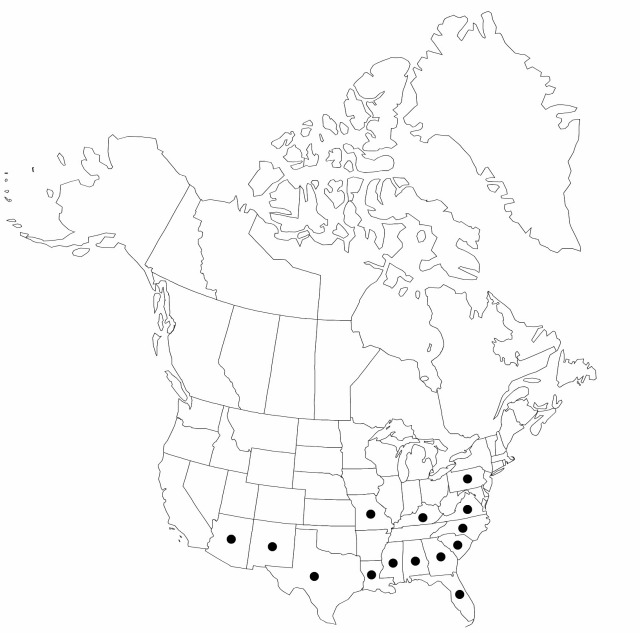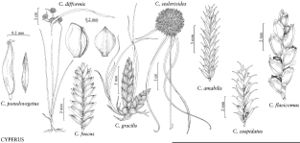Difference between revisions of "Cyperus flavicomus"
Fl. Bor.-Amer. 1: 27. 1803.
imported>Volume Importer |
imported>Volume Importer |
||
| Line 76: | Line 76: | ||
|publication year=1803 | |publication year=1803 | ||
|special status=Introduced;Illustrated | |special status=Introduced;Illustrated | ||
| − | |source xml=https:// | + | |source xml=https://bitbucket.org/aafc-mbb/fna-data-curation/src/2e0870ddd59836b60bcf96646a41e87ea5a5943a/coarse_grained_fna_xml/V23/V23_250.xml |
|genus=Cyperus | |genus=Cyperus | ||
|subgenus=Cyperus subg. Pycreus | |subgenus=Cyperus subg. Pycreus | ||
Latest revision as of 20:39, 5 November 2020
Herbs, annual, cespitose or single-stemmed. Culms trigonous, easily compressed, 30–75 cm × 1–5 mm, basally soft, glabrous. Leaves 1–3, usually withered at anthesis, V-shaped, 5–35 cm × 2–8 mm. Inflorescences: spikes loosely ovoid, 5–25 × 8–22 mm; rays (3–)5–11, 0.4–20 cm; 2d order rays occasionally present, 5–28 mm; bracts 3–7, horizontal to ascending at 30°, (2–)8–35 cm × (1–)4–10 mm. Spikelets 6–60, linear to lanceoloid, 7–30 × 2–3 mm, margins appearing serrate; floral scales 6–24, loosely overlapping, light brown to reddish brown, with conspicuous clear border, medially greenish, 5–7-ribbed, ovate-obovate, (1.4–)1.7–2.3 × 1.4–2 mm, apex acute to obtuse. Flowers: stamens 2–3; anthers 0.4 mm, connective apex reddish, to 0.1 mm; styles 0.1–0.3 mm; stigmas 0.7–1.5 mm. Achenes jet black to dark reddish brown, sessile, obovoid, broadly rounded, 1.2–1.6 × 0.6–1.1 mm, surfaces minutely punctate.
Phenology: Fruiting summer–early fall.
Habitat: Emergent shorelines, roadsides ditches, marshes
Elevation: 0–200 m
Distribution

Introduced; Ala., Ariz., Fla., Ga., Ky., La., Miss., Mo., N.Mex., N.C., Pa., S.C., Tex., Va., Mexico, Central America, South America, Asia, Africa.
Discussion
Cyperus flavicomus has long been called C. albomarginatus (see G. C. Tucker 1994). The closely related (perhaps not distinct) C. macrostachyos Lamarck, a pantropical subspecies, has been reported from Central America; the relationship of the two species needs further study.
Cyperus flavicomus has been introduced in New York; it has not persisted there (R. S. Mitchell and G. C. Tucker 1997).
Selected References
None.
